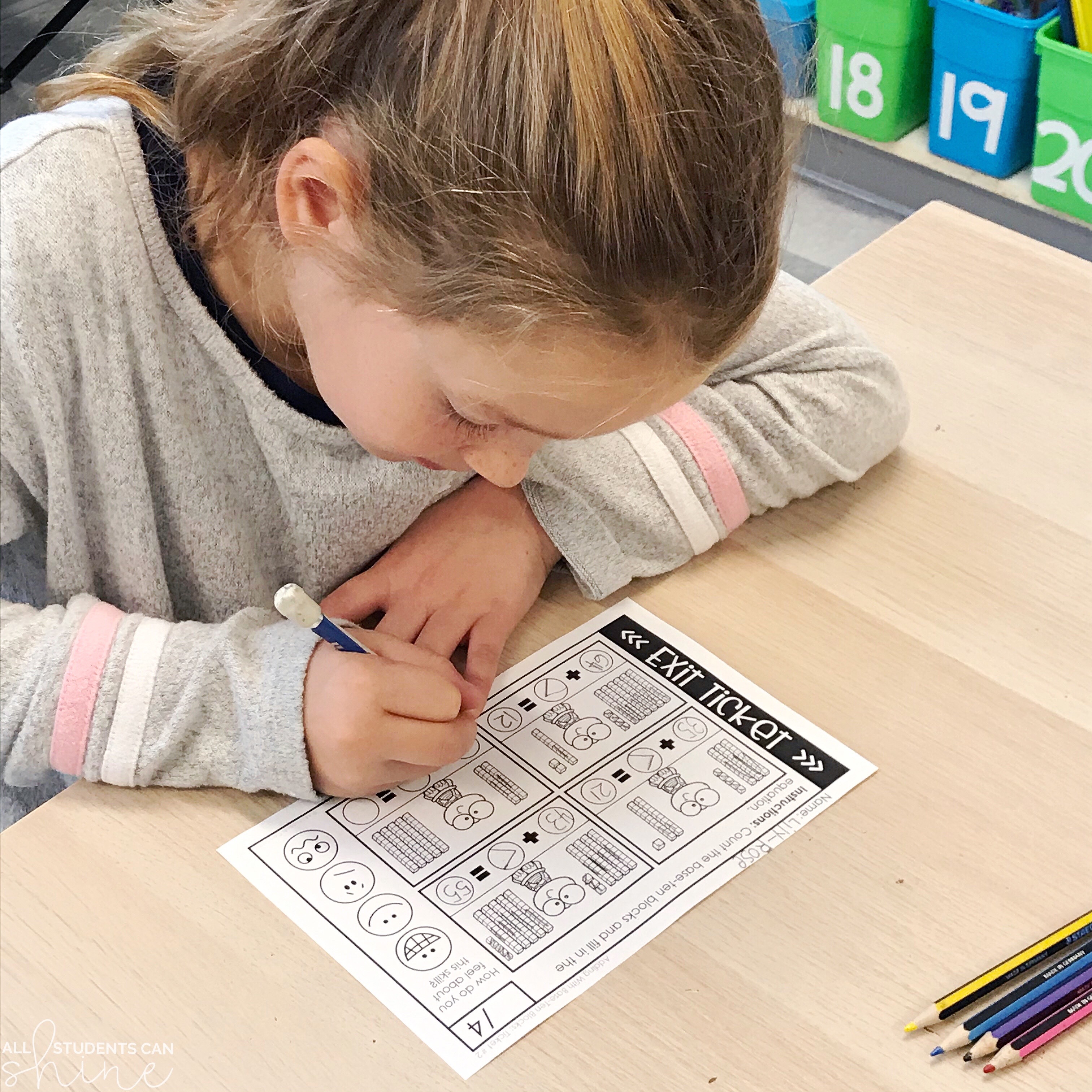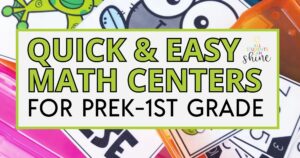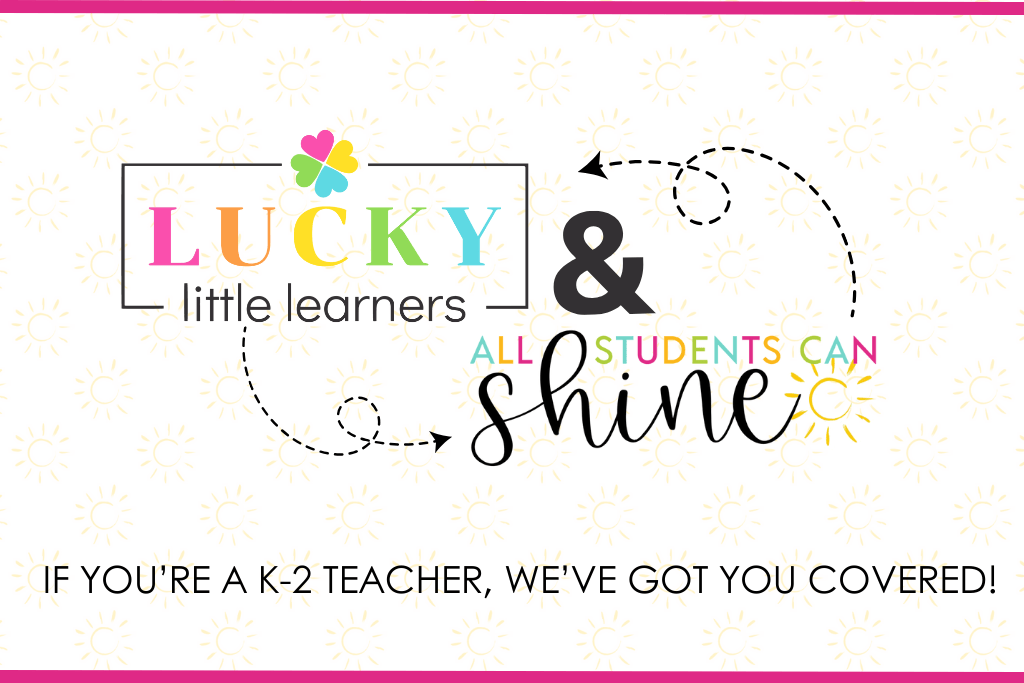Are you a fan of using exit tickets with your students? They are one of my favorite tools in my teaching repertoire! Chances are, you do something resembling an exit ticket each day in your classroom, but you may call it something else. Exit slips, entrance tickets, closure activities. No matter what you call it, the goal is the same: to check in with your little learners and discover how well they’re understanding a concept.
What are exit tickets?
Back in your teacher training classes, you most certainly learned about the difference between formative and summative assessments. Before your eyes glaze over thinking back to those old lectures, let’s define our terms.
“Formative assessment” is really just a fancy term for those small check-ins teachers do each and every day. They help us figure out what kids are learning during a lesson. “Summative,” on the other hand, refers to those assessments that sum up what kids learned at the end of a unit.
Exit tickets are one kind of formative assessment. A common way to do this is to have students answer a question or two on a small slip of paper. You then sort their answers (or have the kids sort them!) based on level of understanding. I like using three piles: Got it! Getting it. Not there yet.
You don’t have to use paper though! There are some great digital options. For example, students could complete a Google Form or you could use a tool like Padlet, Quizlet, or Kahoot!
Why should you use math exit tickets?
Informal assessment is the name of the game with exit tickets! They are an easy, low stakes way to get a sense of what students know and don’t know on a certain topic. By low stakes, I mean that students feel less pressure than they might with a more formal quiz or test.
Exit tickets also give students a great chance to practice self-reflection. We want to train our little scholars to have a growth mindset approach to learning. It’s okay to need improvement, and it’s important that they be able to assess their own progress on certain skills. It’s so powerful when a child can reflect and recognize I’m not quite there yet because it gives them a sense of ownership over their own learning.
There are huge advantages for us teachers as well! Exit tickets, when used wisely, tell us how to teach better. Do we need more time, or less, on a concept? If the majority of my class is in the Didn’t get it! category, that tells me we need to spend more time on that lesson. Conversely, if everyone demonstrates understanding, we can move on more quickly!
When should you use exit tickets?
Traditionally, teachers use exit tickets as a pass to get out the door and onto the next part of the school day. There are lots of other ways to use them, though!
You can flip the timeline entirely and use them as entrance slips! This is a great way to get students thinking about the objective before you start.
Use exit slips to break up the day. After a long stretch of work, an exit slip can signal the end of a lesson. It’s kind of like hitting the pause button before moving on to the next thing!
Use them at the beginning of a new unit to activate students’ prior knowledge and help you plan your teaching.
Spontaneously! Maybe you notice that the kids are getting restless, or you’re not sure if they are really understanding the concepts. Have them pull out a sheet of paper and answer a couple of questions! Spontaneous check-ins help me know when I need to adjust my teaching strategies on the fly.
How I use math exit tickets
I like to use math exit slips that have a couple of components. First, there’s of course a math problem or two for students to complete. Beyond that, I like to have a space for kids to assess themselves. This might be a simple ranking scale (1 = not there yet, 5 = I’m a pro!) or space for them to journal, ask a question, or write a comment.









